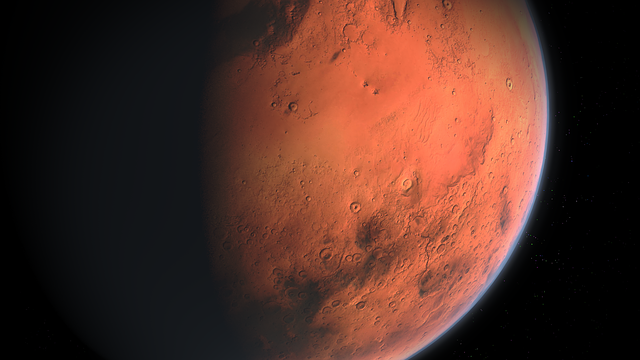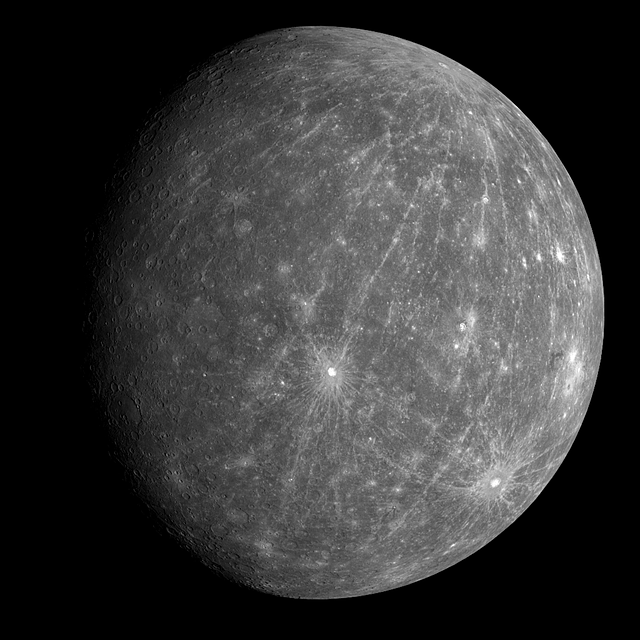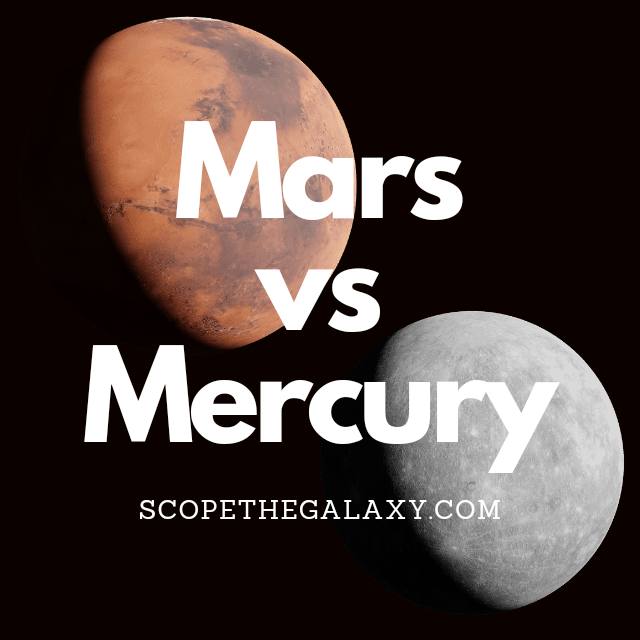*This post may contain affiliate links. This means we may make a commission if you purchase an item using one of our links*
The main differences between Mars and Mercury is that Mars is the 4th farthest planet from the Sun, Mars is around 1.5 times the size of Mercury, it has 2 moons whilst Mercury has zero, Mercury has a thinner atmosphere and in turn is hotter than Mars with a surface temperature averaging 167°C as opposed to Mars that -67°C.
There are numerous differences between Mars and Mercury so continue reading if you want a more thorough look at both planets, some of their similarities and a more detailed breakdown of their differences.
What Is The Planet Mars?
Table of Contents

Mars, also known as the red planet and the celestial object that’s the front runner in our entire solar system to become a possible new home for us if terraformed. It is also the 4th farthest planet from the Sun and is one of 4 main line
terrestrial planets (not including Pluto) in our solar system.
This means that one year on Mars will take roughly 687 Earth days and a day on Mars is roughly the same as Earth at 24 hours and 37 minutes. It’s axial tilt is als very similar to that of Earth where it is positioned around 25 degrees to the right
It may not be the largest terrestrial world in our solar system as its diameter is only 6,779km but, it does have the most moons amongst the normals terrestrial planets here where two, namely Deimos and Phobos are currently orbiting the red planet.
Like Earth and the other terrestrial worlds, Mars does have an atmosphere, certainly more visible than that on Mercury but, when compared to Earth’s it is merely 1% of the volume on our home planet.
As a result it is more susceptible to larger debris striking its surface and is unable to trap in too much heat either. This is why it’s on the colder side with a temperature of around -65 degrees Celsius on average. On the contrary its core is significantly hotter at 1,350 degrees Celsius.
Mars is probably the most explored planet outside of our own, with a multitude of rovers like Sojourner (1997–1997), Opportunity (2004–2018), Spirit (2004–2010), Curiosity (2012–), and Perseverance (2021–) that have landed on the Martian soil to explore it.
Billionaires like Elon Musk and even Jeff Bezos are trying for an opportunity to genuinely have astronauts land on the Martian soil, possibly as early as 2029 so, Mars clearly has a lot interested in its terrain, as a potential substitute for Earth in the future.
What Is The Planet Mercury?

Mercury is the planet closest to our Sun and would fall under the terrestrial planet moniker. Out of the 8 main line planets Mercury is also the smallest, coming in at 4,879km.
This planet is known for having its fair share of craters, which is mostly down to its thinner non protective atmosphere that is unable to stop interstellar debris from striking its surface.
Despite its close proximity to the Sun, Mercury is not the hottest planet in our solar system but, it does come in second, just behind Venus. It’s surface temperature is around 430 degrees on the upper end with the average temperature around 167 degrees Celsius whereas its core is far hotter at around 1,600 – 3,000 degrees Celsius.
Due to it close proximity to our local star, Mercury is unable to sustain a moon around its orbit and even has a very unique rotation around the Sun where it has 3:2 orbital resonance with the Sun.
As for how long it takes for the planet to rotate around our yellow dwarf star, its the shortest time period of 88 days for obvious reasons, whilst a single day on the planet takes 58.65 Earth days to complete. Its axial tilt is only 2 degrees to the right, making it amongst the straightest planets in the solar system too.
How Are Mars And Mercury Similar?
Mars and Mercury do have their similarities, which in this case would include the following:
- Both have a hotter central core.
- Both are a spherical in shape.
- Both are terrestrial planets.
- Both have an atmosphere and a rocky surface.
- Both have roughly the same gravitational strength which is around 3.7 m/s²
Differences Between Mars And Mercury
In regards to the differences, these would include the below:
- Mars has 2 moons whilst Mercury has 0.
- Mercury is the closest planet to the Sun whilst Mars is the 4th farthest. In this case it takes Mars 687 days to complete an orbit around the Sun whilst Mercury completes an orbit in 88 days.
- As for their length of day, Mercury takes 58.65 days to complete a day whilst Mars completes a day in 24 hours and 37 minutes.
- Mercury has a far straighter axial tilt where its tilt is 2 degrees as opposed to Mars’ that is 25 degrees to the right.
- Mars is red in color whilst Mercury is dark gray
- Mercury is smaller than Mars with a diameter of 4,879km compared to Mars’ 6,779km.
- Only 120 craters have been identified on Mars whilst Mercury has significantly more that have been identified, ranging around 763. With that being said Mars is said to have around 43,000 possible craters that are yet to be discovered.
- Mercury is the hotter of the two with an average temperature of 167 degrees Celsius compared to Mars’ -67 degrees Celsius.
- Mars has a stronger magnetic field than Mercury.
- Although Mars has a relatively thin atmosphere when compared to Earth and Venus, it still is far denser than Mercury’s.
- Mars has more mass than Mercury where it is 6.39 × 10^23 kg compared Mercury’s that is 3.285 × 10^23 kg.
Summary
Mars and Mercury do have their fair share similarities from their general composition of a rocky surface and atmosphere, relatively small size, gravitational strength that is almost equal and the fact they both orbit the Sun in a similar manner.
However, they differ in more ways than they are similar from their mass, temperature, size, the length of their days and beyond. Therefore, despite how similar they are in comparison to the rest of our solar system, they’re still completely distinct from one another.

